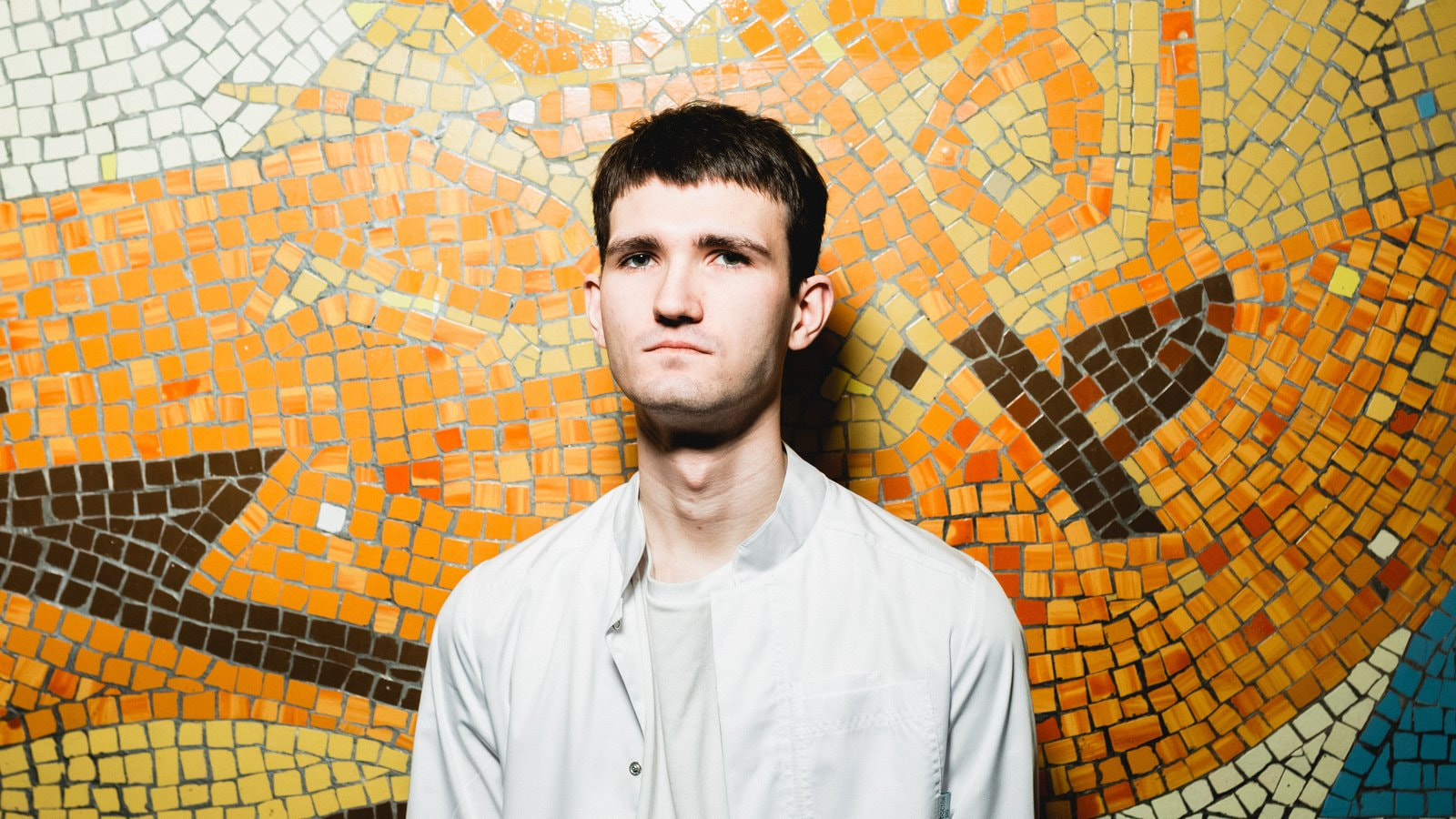Nikita Roschin’s Diary
During this year’s Art Experiment, I was mediating on two positions along the visitor’s route—the piece The Faces of Smell by the art collective Where Dogs Run, and the installation MeMoMe_2020 which reminded me of a mini-laboratory, created by the artist (or rather scientist) Sissel Tolaas.
I would like to begin with the expectations I had prior to my first shift. As mediators, we were very lucky to go through a training program before the launch of the project, the so-called “school”, so to say. We had regular meetings and shared our knowledge about the artists on show with each other, along with discussing them with the exhibition’s curator Iaroslav Volovod. We had previously gained some mediator’s experience at Khodynka Gallery, talked to the mediators employed by the Ural Industrial Biennial of Contemporary Art, and rehearsed a lot… In other words, we constantly discussed the importance of mediation and attempted to develop our own unique “mediator’s identity”. All that helped to establish the following idea in my subconscious: “Everyone knows what kind of mediator you are, everyone will eagerly try to interact with you, and that very special dialogue that everyone is always talking about will inevitably happen”. Even though we also discussed the fact that it may be difficult to instigate a conversation, that people are different and demand a personal approach, inside myself I was pretty certain that there would be no real complications.
Let’s move on from expectations to reality now, and my debut as a mediator. It was a morning shift with me attached to the WDR piece, the installation The Faces of Smell. I tested the work myself a few times, allowing the machine to “sniff me around” to determine the face of my unique smell. Soon after that, I saw a group of visitors approach me, seven people with colored flasks in their hands—their own scents created during a workshop designed by Anna Agurina. Despite the fact that mediation implies dialogue rather than narration of some pre-written texts learnt by heart, I had such a text on my mind (or even a draft, outlining several possible conversation scenarios). I welcomed the group, began the mediation session and realized… That the group was not really into discussing and sharing any ideas with me. I was getting simple answers to my questions, making me feel like I forced the visitors to provide feedback. The group left. As I told them everything I knew, I tried to reflect on the reasons of my mediator’s failure. Why did it happen? Was it my fault? Or the visitors were simply not ready for a dialogue? Perhaps, they had been exhausted before they reached my venue... There were few answers to many questions.
As I continued to contemplate, the second group came. To my surprise, it was an almost complete opposite to the first one: they answered questions using long sentences and the entire group shared opinions with me. Moreover, they asked their own questions regarding not just the work on display, but also my personal vision. “And what do you think?”, asked a girl after sharing her interpretation of the artists’ conceptions articulated by this piece.
Afterwards, I had to work with many totally different groups: large and tiny ones, where there could be ten visitors in some, and just two in others; communicative and unsociable; sharing common and radically opposite viewpoints on the world. We can always draw certain parallels, of course. “Genuine mediation” occurs more often in small groups, for instance, I mean dialogue of that very type that enriches all parties involved in it. Or, to give another example, the presence of children in a group demands more of the mediator’s attention and concentration, as it is still largely prohibited to touch museum items, and someone has to keep an eye on it. But the experience I have acquired cannot be limited to the mediator’s practice alone—it also implied constant communication with colleagues and a lot of experience exchange, which helped me to understand how different all people are. There are more exclusions than regulations in mediation, I believe. And this is why mediators don’t use memorized scripts offering straightforward routes from point A to point B. Somehow, I managed to maintain a conversation with a large group of visitors about utopias and the future of our society in case state control would continue to grow. And vice versa, I failed to build a profound dialogue with a small group, a pair of elderly people who exchanged ideas more vividly with each other than with me. In some groups, children were very active, which made me really nervous, but in other situations, kids listened with much concentration and astonished me with their thoughts and associations, for example, with their descriptions of abstract scents prepared by Sissel Tolaas for this jubilee edition of Art Experiment. The number of possible situations is infinite, and the majority of them will never repeat—making them valuable and unique.
Unfortunately, or luckily, we cannot force a person to engage in a dialogue without their will to do so. Everything we can is to set up a discussion, try to fine-tune the person for it and persuade that each and every opinion matters on its own, there are no fixed frameworks for discussing either a particular artwork or an entire movement. I wish, all museum visitors, not just mediators themselves, grabbed this idea and interpreted our questions as indicators of a genuine desire to learn the viewpoint of a museum visitor, rather test their “knowledge”. Because the core concept of mediation is dialogue, a dialogue that opens the eyes of both the visitor and, to no lesser degree, of the mediator.
